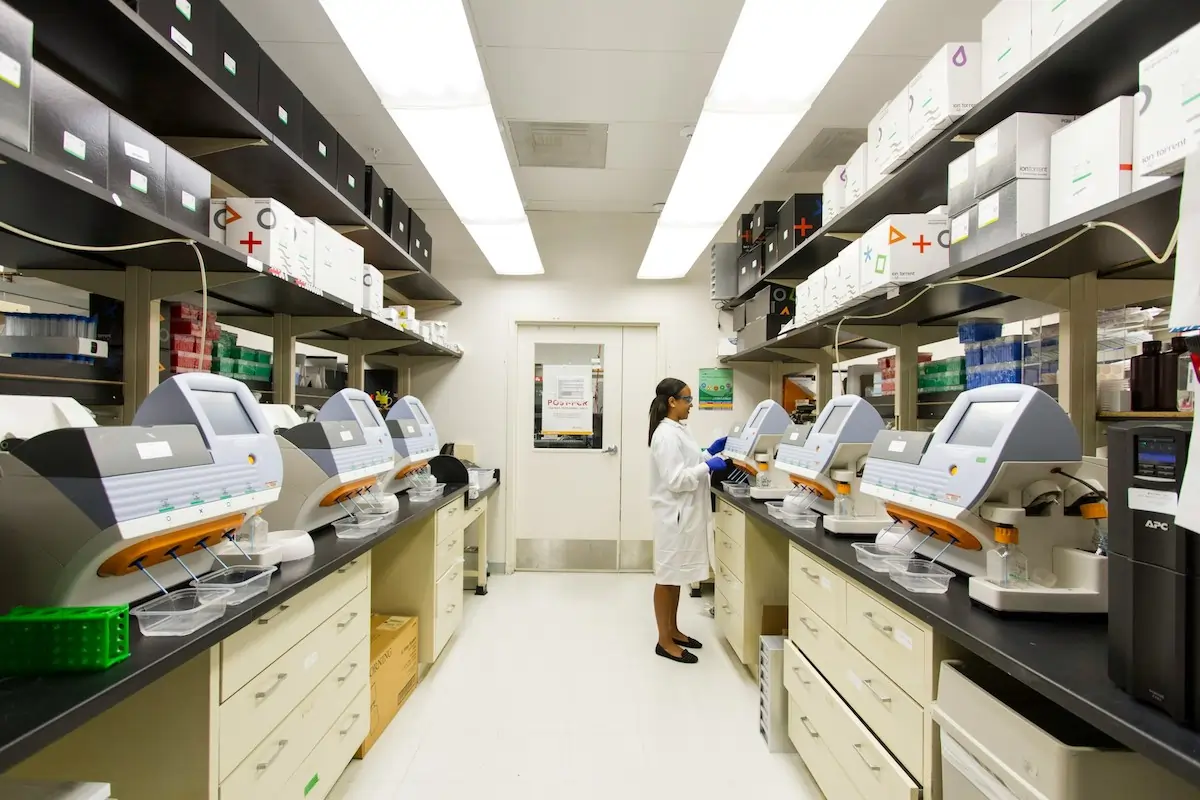Starting a new clinical laboratory can be both exciting and daunting, especially if you’re new to the nuances of this specialized field. Whether you’re transitioning from a larger healthcare organization or venturing into diagnostics from a clinical background, there are core steps you’ll need to take to ensure a smooth launch. This guide outlines the key milestones—spanning everything from regulatory compliance and facility design to staffing and financial planning that will help you move forward with confidence.
Agenda
1. Clarify Your Lab’s Purpose and Scope
2. Understand Your Regulatory Obligations (Including CLIA)
3. Plan Your Facility and Choose the Right Equipment
4. Assemble and Train a Capable Team
5. Develop a Sustainable Financial Strategy
6. Establish SOPs and a Quality Management System
7. Laying the Groundwork for Future Growth
Clarify Your Lab’s Purpose and Scope
The first important step involves defining exactly what your new lab will do. Some labs concentrate on routine blood work, while others prioritize specialized testing such as molecular diagnostics or toxicology. By narrowing your focus, you can better forecast the equipment, personnel, and regulatory certifications that your lab will require. It also helps to conduct basic market research, considering how local competition, insurance reimbursements, and patient populations might affect your projected test volumes.
Having a clear sense of scope at the outset makes it easier to plan nearly every other aspect of your lab. From your overall budget to the vendors you’ll collaborate with, each choice becomes more straightforward when you’ve identified what tests you’ll run and the types of clients you’ll serve. By starting with a well-defined mission, you lay a strong foundation for future decision-making.
Understand Your Regulatory Obligations (Including CLIA)
Clinical laboratories in the United States are subject to CLIA (Clinical Laboratory Improvement Amendments), which sets standards for all laboratories that perform diagnostic testing. It’s vital to determine early on which certification level applies to you. Tests that fall under the “waived” category, for instance, require a different set of documentation and oversight than moderate or high- complexity tests.
In addition to CLIA, some states have additional regulations, and many labs also pursue voluntary accreditations, such as CAP (College of American Pathologists) or The Joint Commission, to bolster their credibility and expand the types of tests they can offer. Making an informed decision about which accreditations to seek—and preparing your lab accordingly—can position you as a trusted name in clinical diagnostics from the moment you open your doors.
Plan Your Facility and Choose the Right Equipment
A strategic layout and the right equipment can determine your lab’s productivity and overall success. Consider how samples will flow from intake through testing to storage or disposal, ensuring each step is efficient and minimizes the risk of error. Many labs will also need to think about specialized environment controls—such as temperature or biosafety levels—depending on the nature of the tests performed.
When it comes to equipment, it’s wise to look for machines that balance your current needs with the potential for future growth. While cost is a factor, dependable service and support should weigh just as heavily in your decision-making. Establishing a relationship with reputable vendors can make a difference if unexpected technical problems arise or if you need to upgrade as your volume scales.
Assemble and Train a Capable Team
No laboratory functions without well-trained professionals who can maintain quality standards while efficiently handling day-to-day tasks. Your staffing plan might include a Laboratory Director, Medical Technologists or Technicians, and support staff to manage administrative work. Depending on the complexity of the tests you offer, you may need individuals with specialized certifications or advanced degrees.
To set everyone up for success, implement a strong onboarding process that acquaints new hires with your lab’s Standard Operating Procedures (SOPs), safety protocols, and data management systems. Maintaining a culture of open communication, continuous learning, and accountability helps retain skilled team members and fosters an environment where innovation can thrive.
Develop a Sustainable Financial Strategy
Launching a clinical laboratory typically involves significant upfront costs, therefore budgeting and financial planning are critical. Equipment, facility design, and consumables—such as reagents and quality control materials—all factor into your initial investment. You’ll also want to consider operational costs like staff salaries, utility bills, and ongoing maintenance.
Revenue forecasting involves a mix of test volume projections, insurance reimbursement rates, and any specialty offerings that might command higher returns. Because labs often experience a lag between performing tests and receiving payments, effective cash flow management becomes paramount. Having a cushion to cover contingencies ensures that delays in reimbursement won’t derail your day-to-day operations.
Establish SOPs and a Quality Management System
Standard Operating Procedures form the backbone of lab consistency and compliance. These documents articulate how to handle samples, calibrate equipment, record data, and ensure personnel safety. They are also among the first items inspectors will request during a regulatory review.
A broader Quality Management System (QMS) ties these procedures together, enabling you to track performance metrics, address any non-conformities, and systematically improve over time. Regularly reviewing and updating your SOPs ensures that your lab stays aligned with evolving regulations and best practices. It also helps you keep pace with new testing methods or technological innovations that might benefit your workflow.
Laying the Groundwork for Future Growth
While every new lab’s journey is unique, the initial milestones are often similar: define your services, secure the right certifications, establish a functional space, hire qualified staff, plan your finances carefully, and implement robust SOPs. By taking a structured approach to these core steps, you can launch your lab with a firm grasp on both compliance and scalability.
The clinical laboratory sector is constantly evolving, and starting on the right foot can set you up for success in an increasingly competitive market. If you’d like guidance at any stage—from early design questions to final inspections—our team is here to help. Reach out today to learn how we can support you in bringing your vision for a new clinical laboratory to life.

